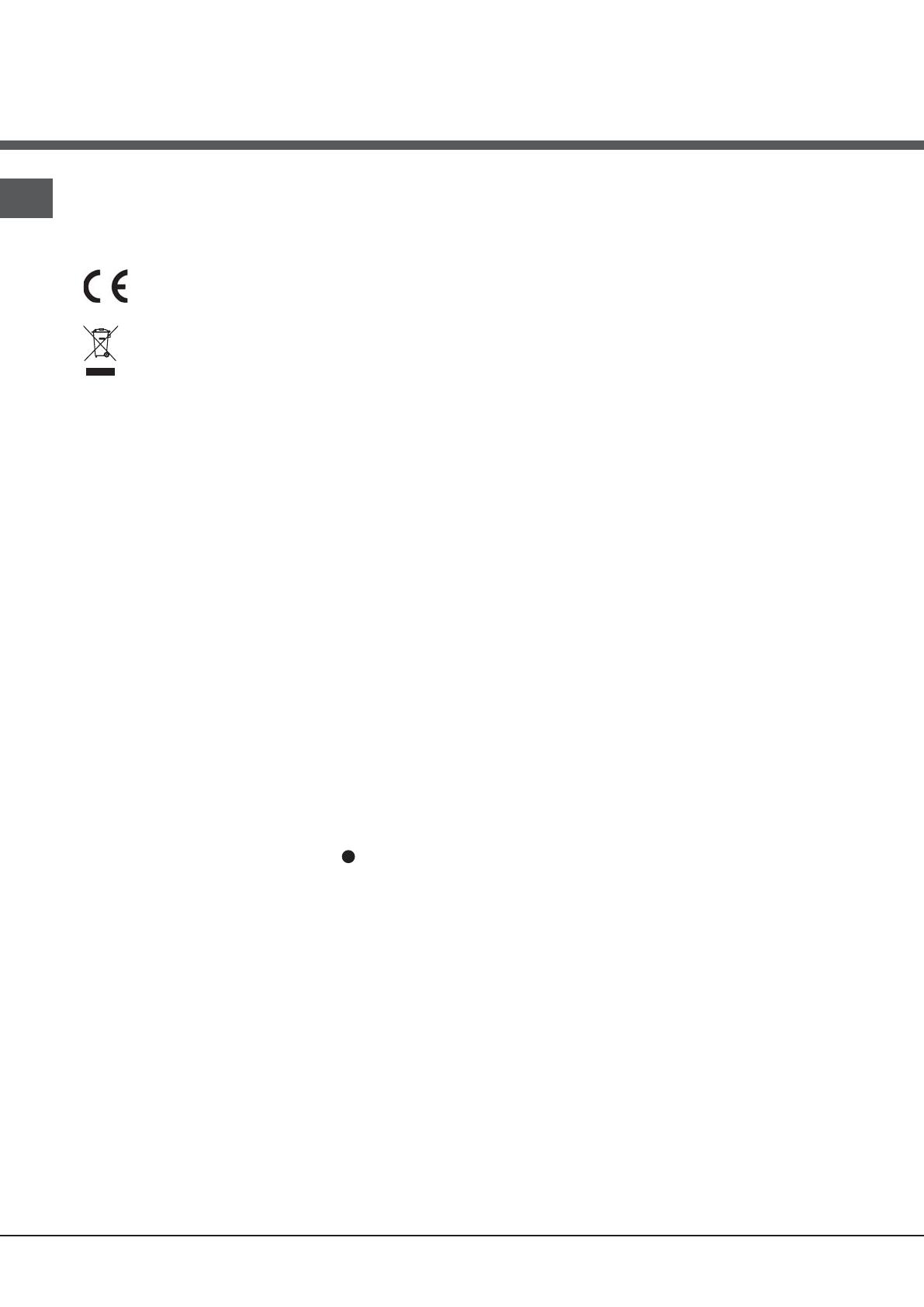
30
DE
Vorsichtsmaßregeln und
Hinweise
! Das Gerät wurde nach den strengsten internationalen
Sicherheitsvorschriften entworfen und gebaut.
Nachstehende Hinweise werden aus Sicherheitsgründen
geliefert und sollten aufmerksam gelesen werden.
Dieses Gerät entspricht den folgenden EG-
Richtlinien:
-73/23/EWG vom 19.02.73 (Niederspannung)
und nachfolgenden Änderungen.
- 89/336/EWG vom 03.05.89
(elektromagnetische Verträglichkeit) und
nachfolgenden Änderungen.
- 2002/96/CE..
Allgemeine Sicherheit
• Dieses Gerät ist für den nicht professionellen Einsatz im
privaten Haushalt bestimmt.
• Das Gerät ist zum Kühlen und Einfrieren von
Lebensmitteln zu verwenden, und nur von Erwachsenen
gemäß den Hinweisen der vorliegenden
Gebrauchsanweisung zu benutzen.
• Der Kühl-/ und Gefrierkombi darf nicht im Freien
aufgestellt werden, auch nicht, wenn es sich um einen
geschützten Platz handelt. Es ist gefährlich, das Gerät
Gewittern und Unwettern auszusetzen.
• Berühren Sie das Gerät nicht, wenn Sie barfuß sind, und
auch nicht mit nassen oder feuchten Händen oder
Füßen.
• Berühren Sie nicht den Rückwandverdampfer: es besteht
Verletzungsgefahr.
• Ziehen Sie den Gerätestecker nicht am Netzkabel aus
der Steckdose, sondern nur am Stecker selbst.
• Vor allen Reinigungs- und Wartungsmaßnahmen muss
der Netzstecker gezogen werden. Es genügt nicht, den
TEMPERATURSCHALTER auf Position
(Gerät
ausgeschaltet) zu drehen, um jeglichen Stromkontakt
auszuschließen.
• Bei etwaigen Störungen versuchen Sie bitte nicht, das
Gerät selbst zu reparieren.
• Verwenden Sie im Innern der Gefriergutlagerfächer bitte
keine scharfen oder spitzen Gegenstände oder
Elektrogeräte, sondern nur die vom Hersteller erlaubten
Hilfsmittel.
• Eiswürfel nicht sofort in den Mund nehmen.
• Dieses Gerät ist nicht zur Verwendung durch Personen
(einschließlich Kinder) mit eingeschränkten körperlichen,
geistigen oder Wahrnehmungsfähigkeiten oder aber
ohne ausreichende Erfahrung und Kenntnis geeignet, es
sei denn unter Aufsicht oder Anleitung durch eine für ihre
Sicherheit verantwortliche Person. Kinder sind zu
beaufsichtigen, um zu verhindern, dass sie mit dem
Gerät spielen.
• Verpackungsmaterial ist kein Spielzeug für Kinder.
Entsorgung
• Entsorgung des Verpackungsmaterials: Befolgen
Sie die lokalen Vorschriften, Verpackungsmaterial
kann wiederverwertet werden.
• Gemäß der Europäischen Richtlinie 2002/96/EC
über Elektro- und Elektronik-Altgeräte (WEEE)
dürfen Elektrohaushalts-Altgeräte nicht über den
herkömmlichen Haushaltsmüllkreislauf entsorgt
werden. Altgeräte müssen separat gesammelt
werden, um die Wiederverwertung und das
Recycling der beinhalteten Materialien zu
optimieren und die Einflüsse auf die Umwelt und
die Gesundheit zu reduzieren. Das Symbol
„durchgestrichene Mülltonne” auf jedem Produkt
erinnert Sie an Ihre Verpflichtung, dass
Elektrohaushaltsgeräte gesondert entsorgt werden
müssen.
Endverbraucher können sich an Abfallämter der
Gemeinden wenden, um mehr Informationen über
die korrekte Entsorgung ihrer
Elektrohaushaltsgeräte zu erhalten.
Energie sparen und Umwelt schonen
• Stellen Sie das Gerät in einem trockenen, gut
belüftbaren Raum auf, nicht direkt in der Sonne oder
in der Nähe von Wärmequellen.
• Öffnen Sie die Gerätetür so kurz wie möglich, wenn
Sie Lebensmittel lagern oder herausnehmen.
Bei jeder Türöffnung geht wertvolle Energie verloren.
• Das Gerät sollte nicht überladen werden: Zur
Haltbarkeit der Lebensmittel muss die Kälte frei
zirkulieren können. Die Behinderung der Zirkulation
hat zur Folge, dass der Kompressor ständig arbeitet.
• Stellen Sie keine warmen Speisen in das Gerät, sie
würden die Temperatur erheblich erhöhen und den
Kompressor zu einer höheren Leistung zwingen, was
eine unnötige Verschwendung an Energie bedeutet.
• Halten Sie die Dichtungen stets effizient und sauber,
damit sie ordnungsgemäß an den Türen anhaften
und die Kälte nicht entweichen lassen (
siehe
Wartung
).















































